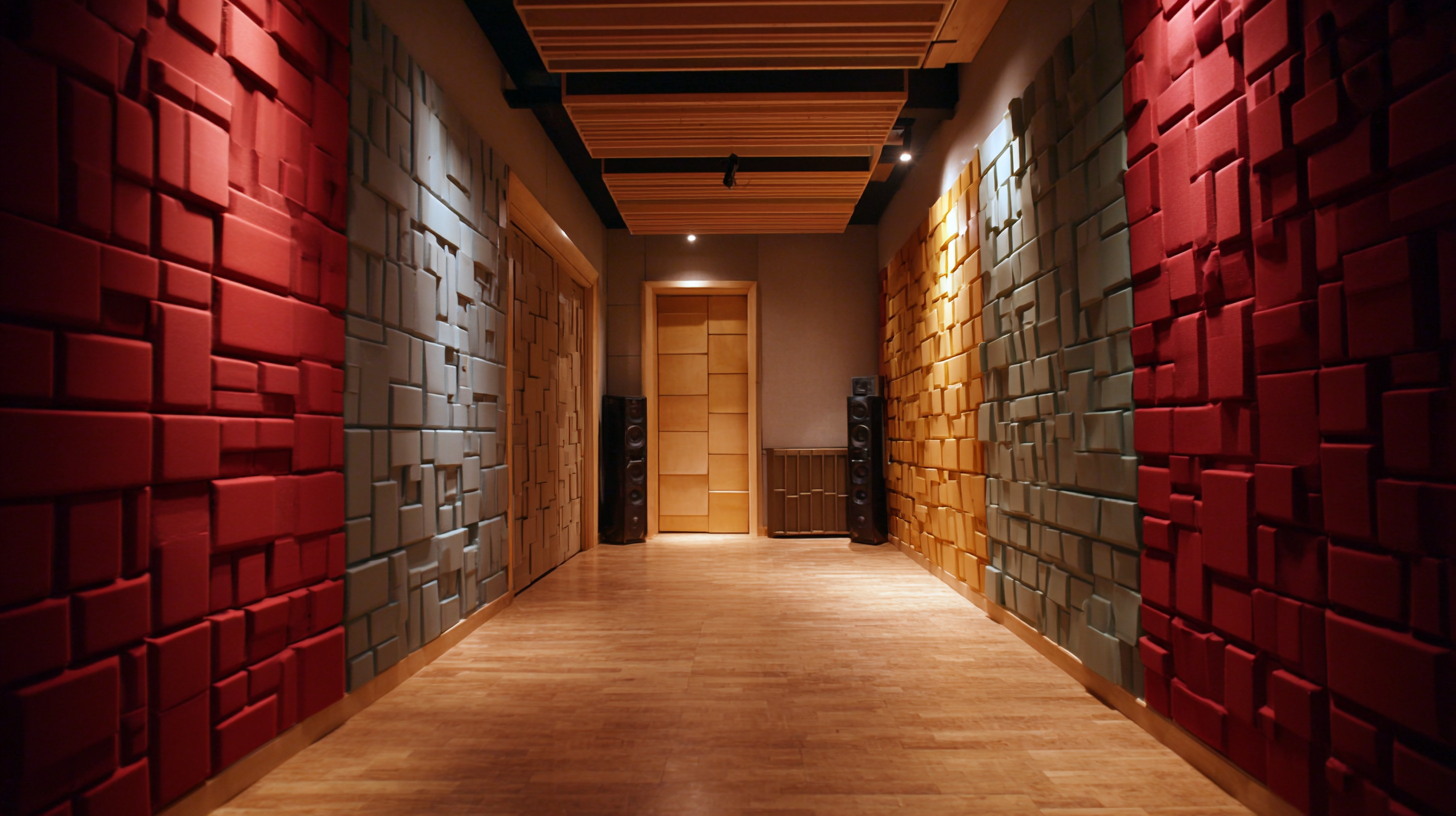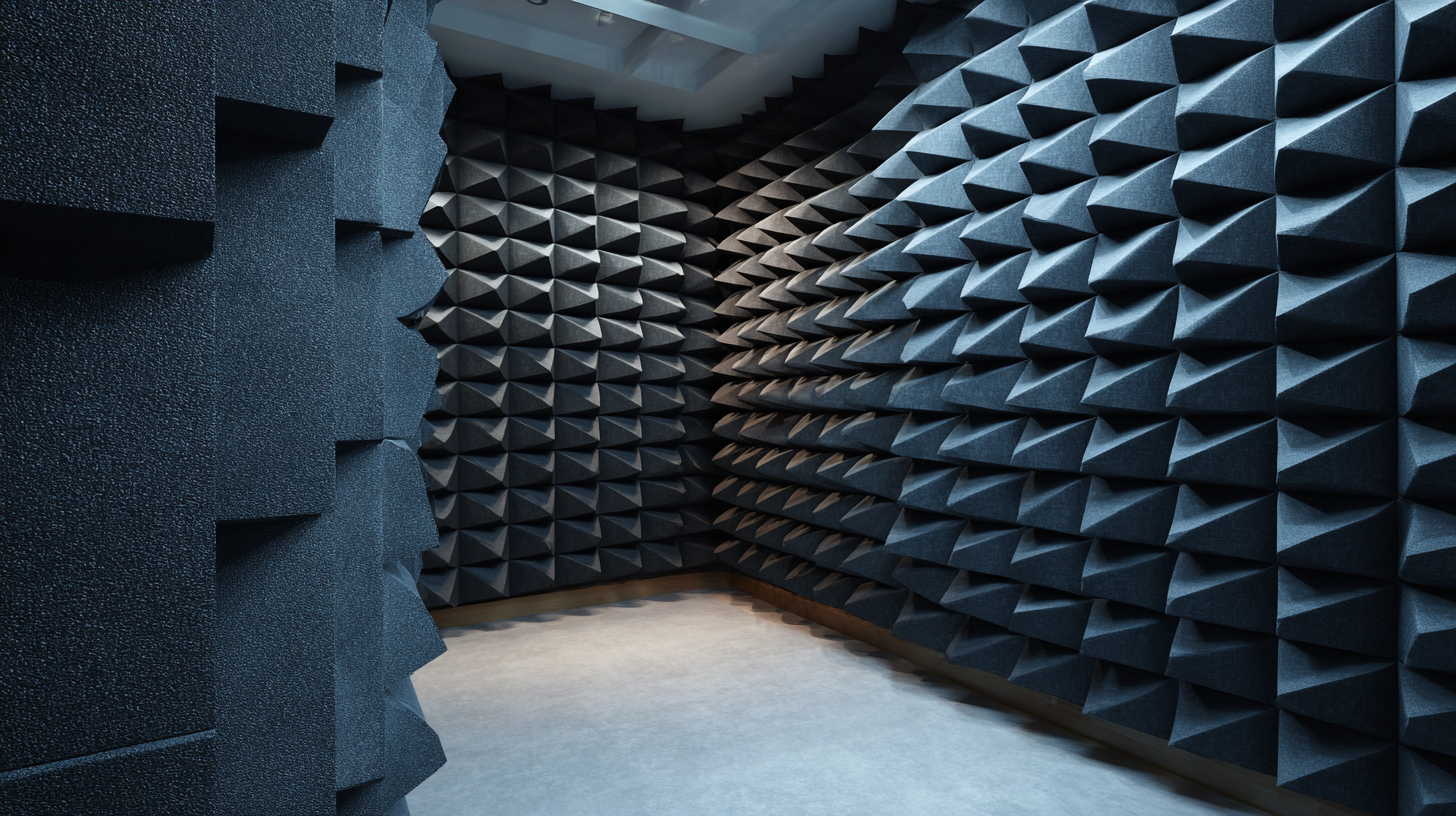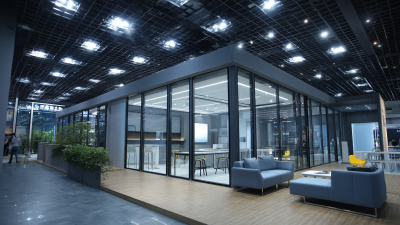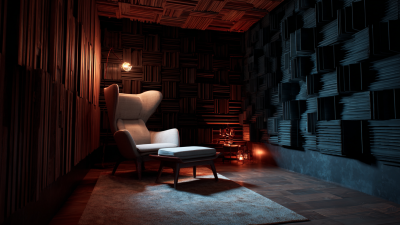Understanding the Science Behind Sound Blocking Panels and Their Impact on Noise Reduction
In today’s fast-paced world, noise pollution is emerging as a significant concern, impacting both physical and mental well-being. According to the World Health Organization, excessive noise can lead to adverse health effects, including increased stress levels and impaired sleep quality.

Sound blocking panels have gained recognition as an effective solution for mitigating unwanted noise in various environments, from residential spaces to commercial buildings. A study by the Acoustical Society of America indicates that strategic placement of sound blocking panels can reduce noise levels by up to 50%. These panels are designed with sound-absorbing materials that disrupt sound waves and minimize transmission, making them essential for creating quieter, more comfortable living and working spaces.
Understanding the science behind sound blocking panels is vital for homeowners and professionals alike, as it empowers them to make informed decisions about noise reduction strategies.
The Fundamentals of Sound Blocking: How Do Acoustic Panels Work?
Acoustic panels are essential tools for controlling sound within a space, helping to mitigate unwanted noise and improve overall acoustics. These panels are designed to absorb sound waves rather than reflect them, creating a quieter environment. Their effectiveness is typically measured in Noise Reduction Coefficient (NRC) ratings, which can range from 0 (no absorption) to 1 (complete absorption). According to the Acoustical Society of America, properly installed acoustic panels can reduce noise levels by over 50% in certain settings, making them invaluable in places like offices, recording studios, and home theaters.
One of the key principles behind acoustic panels is the use of porous materials. These materials allow sound waves to enter and dissipate, rather than bounce back into the room. High-density fiberglass or foam are commonly used, as they possess excellent acoustic absorption properties. A study published in the Journal of Applied Acoustics indicates that low-frequency sound absorption is particularly enhanced when panels are strategically spaced away from walls, which can further augment their effectiveness.
**Tip:** For optimal results, consider combining wall-mounted acoustic panels with bass traps in corners, as this setup addresses a broader frequency range and can significantly improve sound quality. Additionally, ensure your panels are installed at varying heights to effectively target sound waves traveling through your space.
Key Materials Used in Effective Sound Blocking Panels
Sound blocking panels are essential tools for managing and reducing noise in various environments, and their effectiveness largely depends on the materials used in their construction. Commonly utilized materials include mass-loaded vinyl, fiberglass, and acoustic foam, each offering distinct advantages. Mass-loaded vinyl, for instance, is a dense material that adds weight and bulk, effectively dampening sound waves. It is particularly useful in commercial settings where industrial noise can be a concern. Fiberglass panels, on the other hand, provide both sound absorption and thermal insulation, making them a versatile choice in office spaces.
Additionally, acoustic foam is often employed for its lightweight and porous nature, which helps in minimizing echo and reverberation. This material is favored in recording studios and home theaters, where sound clarity is paramount. The combination of these materials in various configurations leads to innovative sound blocking solutions able to address specific noise issues, whether it's internal noise from machinery in industrial settings or external noise in residential areas. Thus, understanding the key materials used in sound blocking panels is crucial for selecting the right solution for effective noise reduction.
Understanding Decibel Reduction: Measuring the Impact of Sound Panels
The efficacy of sound blocking panels can be measured in terms of their impact on decibel reduction, which is a critical factor in assessing their noise-reducing capabilities. Decibels (dB) quantify the intensity of sound, with a difference of just 10 dB representing a tenfold change in sound intensity. Sound panels are designed to absorb and diffuse sound waves, thereby reducing the overall dB level in a given environment. This ability to lower sound pressure levels is essential in spaces such as recording studios, home theaters, or open offices, where excessive noise can disrupt activities and reduce the overall quality of experience.

When evaluating the performance of sound panels, it’s important to consider their material composition and design. Different materials, such as fiberglass, foam, or fabric-wrapped panels, possess unique acoustic properties that contribute to their effectiveness in specific frequency ranges. The placement and configuration of these panels also play a significant role in how much decibel reduction can be achieved, as sound waves interact differently with various surfaces.
Research indicates that properly installed sound blocking panels can achieve decibel reductions ranging from 5 dB to more than 30 dB, significantly enhancing the acoustic environment while promoting tranquility and focus.
Practical Tips for Choosing the Right Sound Blocking Solutions for Your Space
When it comes to choosing the right sound blocking solutions for your space, several key factors should be considered based on industry standards and research findings. Firstly, understanding the Noise Reduction Coefficient (NRC) is crucial. According to a report by the Acoustical Society of America, panels with an NRC rating of 0.5 or higher are effective in reducing sound absorption in various environments, making them a suitable choice for homes, offices, and recording studios. For example, acoustic panels made from high-density fiberglass or foam often achieve NRC ratings from 0.7 to 1.0, significantly minimizing sound reverberation.
Additionally, it’s essential to consider the material and thickness of the panels. The National Institute of Standards and Technology indicates that thicker panels, typically ranging from 2 to 4 inches, provide better sound isolation compared to thinner alternatives. A 2021 industry study revealed that spaces utilizing sound blocking solutions achieved noise reduction levels of up to 30 decibels, a substantial improvement for areas requiring quietness, such as libraries or conference rooms. Therefore, when selecting sound blocking panels, prioritize those with high NRC ratings, appropriate thickness, and material that fits your specific noise reduction needs to create a more tranquil environment.
Installation Best Practices for Maximizing Noise Reduction with Panels
When it comes to effectively reducing noise in a space, proper installation of sound blocking panels is crucial. First, assessing the environment where the panels will be installed can guide the selection of the right type of panels. For instance, in areas with high-frequency noises, panels with higher density materials can provide better sound absorption. It's important to arrange the panels strategically; placing them on walls that face external noise sources will optimize noise reduction. Additionally, combining panels with various sizes and thicknesses can enhance overall effectiveness.

Another best practice is ensuring that panels are mounted securely. Using the right adhesives or hardware to eliminate gaps between the wall and the panel is essential, as even small openings can allow sound to penetrate. Moreover, considering the placement height is vital; installing panels at ear level can maximize their impact. Regularly reviewing and adjusting the layout based on perceivable changes in noise levels can also help maintain an optimal acoustic environment. Following these installation best practices will significantly enhance the effectiveness of sound blocking panels, making a noticeable difference in noise reduction.
Related Posts
-

Exploring Innovative Sound Deadening Panels at the 138th China Import and Export Fair 2025
-

Discover the Science Behind Sound Proof Panels: How They Transform Your Space into a Quiet Oasis
-

Maximize Your Space's Acoustics: Effective Sound Absorption Techniques Backed by 80% Industry Success Rate
-

Creating Your Perfect Soundproof Room for Ultimate Peace and Quiet
-

Exploring the Science Behind Soundproof Rooms: Key Noise Reduction Techniques and Benefits for Homeowners
-

Exploring the Benefits of Soundproof Rooms for Enhanced Productivity in Home Offices

